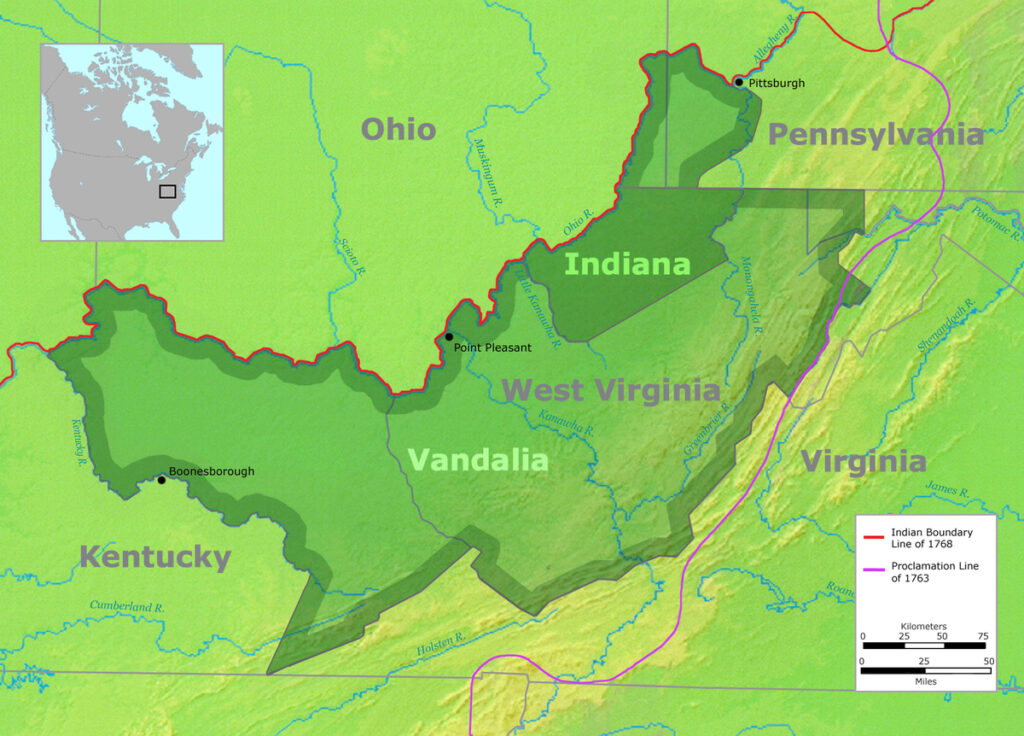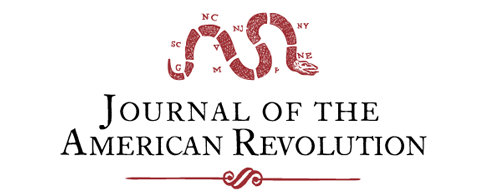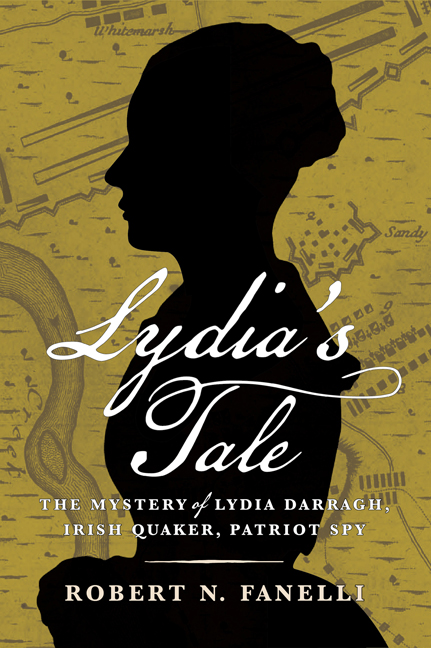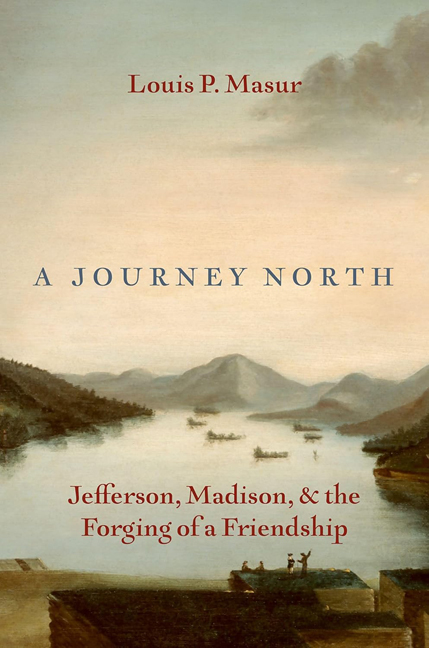The genteel glass rattled through the windows of the “flying machine” as Maj. William Trent tried to stay awake on the coach ride from Bristol to London.[1] The passage across the ocean had been anything but accommodating after he was delayed a week off the coast of Ireland to wait out the angry winds of the Celtic Sea. Finally on May 25, 1769, he arrived in the center of London at Charing Cross and boarded another coach by the statue of Charles I.[2] Then the coach went up the Strand and turned onto Craven Street, stepping out near the house marked number 27.[3] This was the residence of Margaret Stevenson and her renter, the renowned Dr. Benjamin Franklin.
Trent, along with his Philadelphia counterpart Quaker merchant Samuel Wharton, wasted no time in discussing business with Franklin over supper in the guest parlor. Even before Trent arrived, Wharton had already established powerful friends in Parliament who seemed optimistic the “Americans” could get their land tract from the Six Nations loosely called “Indiana” recognized as a charter or colony.[4] Wharton had waited patiently for Trent to bring the necessary papers from their 1768 Treaty of Stanwix conditional sale of land for the Privy Council, but most importantly these gentlemen needed his writing prowess and secretarial skills.[5] That summer of 1769, Franklin and Wharton would address the Privy Council after His Majesty King George III’s birthday on June 4 and Trent would be amused by Wharton’s style of fashion for this event.[6] “You would love to see him dressed,” Trent wrote, “As he has not the least sign of Quaker about him and wears his sword and with much ease as if he had always done it.”[7]
But during this lobbying with President of the Board of Trade Wills Hills, the 1st Marquis of Downshire also known as Lord Hillsborough, it was suggested to them to propose a larger area for a royal colony, not just what they had petitioned originally as “Indiana.” So, they discussed it in secret at the “Crown and Anchor Tavern” at the corner of the Strand and Arundel Street across from the St. Clement Danes church.[8] This first meeting where Trent documented the minutes on December 27, 1769, had sixteen potential shareholders, including important London gentlemen like Thomas Pownall, Anthony Todd, and the Honorable Thomas Walpole.[9]
This looked very promising for those who traveled across the ocean, but they had much to contend with. Franklin, their designated chairperson, had mentioned that summer that he had been contracted out for scientific projects all around the city. In a letter Trent wrote to George Croghan on June 10, 1769, he mentioned what Franklin was up to:
At the request of the House of Commons forming some Pipes & to keep a proper Degree of warmth always in the House in winter and is fixing wires on St. Pauls, the Royal Exchange &.[10]
And by 1770, it was no secret there were other rival land companies trying to propose charters in the colonies just like they hoped to do. Arthur Lee, son of the late Thomas Lee (former co-founder of the Ohio Company) was admitted to the Lincoln’s Inn on March 1, 1770[11] and represented the Mississippi Company, who wished to be granted a charter of two and a half million acres in the Ohio Valley that overlapped the large grant that the Honorable Thomas Walpole and William Trent were seeking. The petition was on behalf of those Virginia soldiers from the French and Indian War who wished to receive bounty land claims from 1754 and its members included veteran officers like George Washington, Adam Stephen, and others.[12] Ironically, the other rival lobbyist was Trent’s friend George Mercer, who represented the original Ohio Company and wished to renew their old royal charter from 1749.
Fortunately for those members of the aptly named Walpole Grant, neither petition proved much of a challenge to theirs. On May 7, 1770, Mercer withdrew his petition because he had no other support from Virginia.[13] In fact, on the same day Mercer signed articles of agreement to merge the Ohio Company into the Walpole Grant, both American and English shareholders referred to this conglomerate as the Grand Ohio Company.[14] Soon after this development, the Mississippi Company also shared the same fate as the Ohio Company petition when the Privy Council rejected it after Lee submitted it. It also forced George Washington to ride into the Ohio country that fall, making his opinion known during his travels that the Walpole Grant and its members of the Grand Ohio Company were a serious threat, especially when he wrote to Lord Botetourt on October 5, 1770 saying, “If obtained, will in my humble opinion give a fatal blow to the interest of this Country.”[15]
With their rivals out of the way, the Grand Ohio Company set sight on drafting a new petition for almost twenty million acres with the intention to gain acceptance by the Privy Council. By the end of 1771, principal shareholders like Wharton and Trent even set a deadline to sail home after Lord Hillsborough’s approval, but it was to no avail. Truth was, entering 1772, these two did not plan financially to stay this long lobbying for the Grand Ohio Company. Trent would even use the last of his promissory note from New Jersey Royal Governor William Franklin and the Burlington Company to purchase clothing materials for a silk court suit.[16] Hand-sewn by French silk weavers in the East End of London known as Spitalfields, the cream-colored silk suit was similar to Wharton and Franklin’s attire when Trent first arrived in London. The court suit consisted of three pieces, the coat, waistcoat, and breeches when Trent received them from the tailor and on June 24, 1772, he joined Dr Franklin, Thomas Walpole, Samuel Wharton, George Mercer and the Reverend William Hanna at the Cockpit, an octagonal shaped structure and last remaining building of the Palace of Whitehall also known as His Majesty’s Court of St. James.[17] There amongst the Privy Council, Major Trent and George Mercer addressed the court about the advantages of their charter and how a capital located in Pittsburgh would be more beneficial than Williamsburg or Philadelphia, whose respective boroughs stood hundreds of miles from their proposed colony and from either of which it would not be cost effective to supply their proposed colony.[18]
Over a week went by before they heard anything and when they were summoned by the Cockpit on July 1, 1775, the answer they had all been hoping for finally became known. The Privy Council approved their colony and the surprise announcement spread across London rapidly. The very next day it even appeared in Jackson’s Oxford Journal:
A Privy Council was held yesterday at the Cockpit when the petition of the Honorable Thomas Walpole, Samuel Wharton Esquires and others, for a grant of a tract of country for a new Colony on the Banks of the Ohio and North America, was again taken into consideration, finally reported upon, in favor of the Petitioners.[19]
Their main opposition, Lord Hillsborough, was shocked by this majority vote from the other lords and in an act of defiance, still refused to sign off on the colony. When this caused internal fighting between him and the other lords, he realized the others of the Privy Council would approve the new colony with or without him and he chose to resign on August 13, 1772. His successor was William Legge, the Second Earl of Dartmouth, who on the next day approved their colony now named “Pittsylvania” and passed it along to the Solicitor General Alexander Wedderburn to get the final signature before it became official.[20]
During this time, despite protests and unrest in America due to the imposed taxation, this was still a solid victory for those of the Grand Ohio Company. In fact, the Rev. William Hanna, who accompanied Trent and Wharton into the Cockpit, described this achievement to his friend in New York, Sir William Johnson, the Superintendent of Indian Affairs:
And I must say it gave me a particular Pleasure to Hear an American & a countryman act his Part so well before such a Number of great Lords, at such an August Board. And I now have the great Pleasure to inform you that their Lordships have overruled Lord Hillsborough’s Report & his Associates. This is looked upon here as a most Extraordinary Matter. And what no American ever accomplished before.[21]
Those shareholders in the Grand Ohio Company were riding high and to garner more interest, changed the name of their proposed colony to appeal further to English constituents. The colony of “Pittsylvania,” named for the former Secretary of State for the Southern Department and former Prime Minister William Pitt, First Earl of Chatham (Or William Pitt the Elder), was now called “Vandalia” by late 1773 in honor of His Majesty’s King George III’s wife Queen Charlotte of Mecklenburg-Strelitz, because she descended from the Germanic tribes in southwestern Europe and northern Africa called the Vandals.[22] There was even debate of who would be chosen as governor of “Vandalia,” whether it be Grand Ohio Company lobbyist Samuel Wharton or, according to the announcement in the Virginia Gazette, George Mercer.[23] Wharton would even go as far as design his mansion and gardens in Pittsburgh, so that once the Solicitor General gave his approval, they would already have it furnished in the designated capital.[24]
 Their storied triumph was short-lived. On January 29, 1774, “Vandalia” chairperson Dr. Franklin was summoned to the Cockpit once again, but not for the reason they all hoped for.[25] Franklin was brought before the entire Privy Council and accused of treasonous acts for “deliberately” leaking letters to Massachusetts Gov. Thomas Hutchinson to incite riots in the colonies against the British Crown. He was also verbally accosted by Solicitor General Wedderburn and when the smoke cleared, Franklin had not only been dismissed as “Postmaster General of the Colonies” but also lost his belief they could actually reconcile with Great Britain.[26]
Their storied triumph was short-lived. On January 29, 1774, “Vandalia” chairperson Dr. Franklin was summoned to the Cockpit once again, but not for the reason they all hoped for.[25] Franklin was brought before the entire Privy Council and accused of treasonous acts for “deliberately” leaking letters to Massachusetts Gov. Thomas Hutchinson to incite riots in the colonies against the British Crown. He was also verbally accosted by Solicitor General Wedderburn and when the smoke cleared, Franklin had not only been dismissed as “Postmaster General of the Colonies” but also lost his belief they could actually reconcile with Great Britain.[26]
It also meant any hope for “Vandalia” to be signed off by Wedderburn now had lost its momentum. Franklin, frustrated with the delays of the Privy Council for their colony and his recent demotion due to the Hutchinson affair, decided to leave London with his grandson “Temple” on March 20, 1775.[27] Trent and Wharton were prepared to follow Franklin and return to America as well, but first they had one last meeting at the Crown and Anchor Tavern to discuss the future of the company. On April 12, those in attendance decided Trent would return to America and as he was given power of attorney for company business, would begin gathering potential investors once Wharton sent word it was officially greenlighted there in London.
From his residence on Norton Street (Today Bolsover Street), Trent would stop by Margaret Stevenson’s house on Craven Street (now living at the house marked No. 1) one final time before departing for London to collect correspondence and other documents to smuggle to Franklin in Philadelphia.[28] This included the recently circulated “Restraining Acts for Pennsylvania and New Jersey” (which forbade trading with any country beside Great Britain and went into effect July 1, 1775), which had not been announced in America yet, and a letter addressed to Franklin and Trent dated April 17 from Samuel Wharton.[29] The letter, composed from the city of Portsmouth to the south, warned them both of spies that were “sent to each of the provinces to collect Intelligences and report, the Conduct of people in general.”[30] One such spy, according to Wharton, was aboard Trent’s ship the Sally, docked at the Key of the Wool-Wharf along the Thames River and in the shadow of the Tower of London.[31] His name was Philip Skene and it was reported he had been recently named lieutenant governor of Ticonderoga and Crown Point by the Privy Council, having the authority to raise a large contingent of soldiers for His Majesty’s army there.[32]
Nevertheless, Skene was the least of their concerns raised by Wharton. In the closing of his letter, Wharton remarked that he had seen a large sixth-rate frigate with twenty-eight guns being loaded with military stores of arms, money, and clothing for the British Army in North America. Also aboard this ship were three British generals, William Howe, Henry Clinton, and John Burgoyne, who were “waiting only for a favorable wind.”[33] The ship he was referring to in Portsmouth was the Cerberus, named for the three-headed dog in Greek mythology that guarded the entrance to the underworld across the River Styx. Ironically, the Cerberus would carry the three “heads” of the British army to America and be the first of the warships to arrive in Boston Harbor on May 25.[34]
While Trent’s ship, the Sally, was anchored off the coast of Newfoundland because of dangerous winds, news came from a passing ship that Skenesborough and his posts Ticonderoga and Crown Point had been captured on May 10 and 11.[35] Two of the Sally’s passengers were especially concerned by this news: Philip Skene, a former British officer with his own land interests in mind, had his residence at Skenesborough and had formerly commanded Ticonderoga and Crown Point; Lt. Patrick Moncrieffe belonged to the 26th Regiment of Foot, which currently garrisoned those posts. With a civilian named Mr. Lundy, Skene and Moncrieffe attempted to take over the ship, but were taken into custody by the ship’s crew.[36] When the ship arrived in Philadelphia on June 7, the three mutineers were escorted to the New Tavern along Second Street (today the City Tavern Museum) where they were questioned by three members of the Second Continental Congress, John Adams, Thomas Mifflin, and Silas Deane.[37]
For Trent, six years had passed since he first sailed to London from the Philadelphia dock owned by merchant Thomas Clifford and everything had changed since he left there and sailed for home at the end of April. Hostilities led to bloodshed in Massachusetts on April 19, 1775, in the towns of Lexington and Concord, and with London officials focusing their efforts on the city of Boston, there would be no attempt or time to approve a petition from America.
Surprisingly though, word reached Trent from Wharton that “Vandalia” had been officially approved by Wedderburn back on May 1, 1775, but the colony was placed on hiatus until hostilities ceased in America.[38] This was unfortunate for Trent and the other shareholders, whose dream of the “Vandalia” colony would end up just that, a dream. The American Revolution did not end in weeks or months like they hoped but lasted eight long years and placed them all heavily into debt with creditors. Two such English shareholders would invest so much into this failed enterprise that it affected their future generations. Sir Matthew Fetherstonhaugh, one of the company’s benefactors, had built a gothic tower on his country estate “Uppark” in South Harting, naming it “Vandalia Tower”; it was abandoned by the family soon after his death in 1774.[39] The Honorable Thomas Walpole had fallen into financial troubles by the end of the Revolutionary War and was forced to sell the Carshalton estate in 1785 that he nicknamed the “Vandal House.”[40]
So, after a significant effort by those individuals of the Grand Ohio Company, what was initially thought to be an American triumph and a possible fourteenth colony soon became a fanciful folly lost in the shadow of the American Revolution.
[1] William Trent to George Croghan, June 10, 1769, Historical Society of Pennsylvania, Cadwalader Family Papers, Series 4.
[2] Ibid.
[3] Westminster Rate Books, Craven Street-1773, Courtesy of the city of Westminster Archives.
[4] Samuel Wharton, Plain Facts: Being an Examination into the Rights of the Indian Nations of America (Philadelphia, 1781), 105.
[5] Ibid, 85.
[6] William Trent to George Croghan, June 10, 1769, Historical Society of Pennsylvania, Cadwalader Family Papers, Series 4.
[7] Ibid.
[8] Kenneth P. Bailey, ed., The Ohio Company Papers 1753-1817 (Arcata, California, 1947), 283.
[9] Ibid.
[10] William Trent to George Croghan, June 10, 1769, Historical Society of Pennsylvania, Cadwalader Family Papers, Series 4.
[11] Middle Temple Register of Admissions-1770, Courtesy of Middle Temple Archives, London, England.
[12] George E. Lewis, The Indiana Company 1763-1798 (Glendale: University of California-Los Angeles, 1941), 94.
[13] Ibid, 98.
[14] Bailey, The Ohio Company Papers, 283.
[15] George Washington to Lord Botetourt, October 5, 1770, Library of Congress, Papers of George Washington, Colonial Series, Volume 8.
[16] Bailey, The Ohio Company Papers, 205-210.
[17] Thomas Walpole, Benjamin Franklin, John Sargent, and Samuel Wharton, Report of the Lord Commissioners for Trade and Plantations with Observation and Remarks (London, 1772).
[18] Ibid.
[19] Jackson’s Oxford Journal, July 4, 1772.
[20] George E. Lewis, The Indiana Company 1763-1798 (Glendale: University of California-Los Angeles, 1941), 120.
[21] Edmund Bailey, The Documentary History of the State of New York (Albany: Weed, Parson & Co, 1850), 296-297.
[22] Thomas Wharton to Samuel Wharton, June 18, 1773, Historical Society of Pennsylvania, Wharton Family Papers, Volume 29.
[23] Virginia Gazette, September 23, 1773.
[24] Samuel Wharton to George Croghan, February 3, 1773, Historical Society of Pennsylvania, Cadwalader Family Papers, Series 3.
[25] Alexander Wedderburn’s Speech before the Privy Council to Benjamin Franklin, January 29, 1774, Papers of Benjamin Franklin, 21:37.
[26] Anthony Todd to Benjamin Franklin, January 31, 1774, Papers of Benjamin Franklin, Volume 21, 73. Benjamin Franklin to William Franklin, February 2, 1774, Papers of Benjamin Franklin, 2:75.
[27] Margaret Stevenson to Benjamin Franklin, April 24, 1775, Papers of Benjamin Franklin, 22:27.
[28] Will of William Trent, April 14, 1775, Historical Society of Pennsylvania, Simon Gratz Autograph Collection, 0250B, Box 277; Westminster Rate Books-Craven Street 1775, Courtesy of the City of Westminster Archives.
[29] Samuel Wharton to Benjamin Franklin, April 17, 1775, Papers of Benjamin Franklin, 22:23.
[30] Ibid.
[31] Kentish Gazette, April 22-26, 1775.
[32] Samuel Wharton to Benjamin Franklin, April 17, 1775, Papers of Benjamin Franklin, 22:23.
[33] Ibid.
[34] Journal of HMS Cerberus, James Chads Commanding, May 25, 1775, The National Archives, UK: Admiralty Volume 51/181.
[35] Maryland Gazette, May 25, 1775.
[36] Ibid., June 10, 1775, 2:86.
[37] Journals of the Continental Congress 1774-1789, June 8, 1775, 2:82.
[38] Samuel Wharton, Plain Facts. Lewis, The Indiana Company, 151.
[39] Samuel Wharton to Matthew Fetherstonhaugh, August 14, 1773, British Library, MS 575.
[40] Ibid.








3 Comments
While the planning for Vandalia was going on, a group of Virginia investors founded a colony that later become Tennessee, and another group of North Carolina investors founded a colony that they called Transylvania, but which was quickly renamed Kentucky; Virginia grabbed Kentucky as a new county of Virginia for a few years. Both of those colonies had frequent warfare against local Indigenous groups who had not been made party to the land deals, but essentially they were (from the investors’ point of view) successes.
William Trent is a fascinating individual. For a terrific biography, see Jason Cherry’s recent work.
Cherry, Jason A. 2024 William Trent – Factor of Ambition. Mechanicsburg, PA: Sunbury Press, Inc.
Looking at the map , Vandalia today is mostly West Virginia. The mountainous topography and barriers to transportation was unpromising for subsistence agriculture let along plantations. This was pre- coal Virginia too…so that asset was 100 years to yet come. One must think that even had the Revolutionary War not upended the plans and grants to settle this mountain wilderness, the stark, unpromising conditions ( even Native Americans chose not to settle WVa…leaving it a void )…would have been a financial bust for those powdered wig wearing London investors.